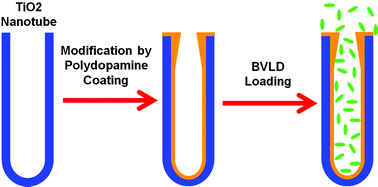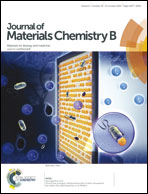Polydopamine-mediated long-term elution of the direct thrombin inhibitor bivalirudin from TiO2 nanotubes for improved vascular biocompatibility†
Abstract
Thrombosis and restenosis are two major complications associated with current commercial vascular stents. In situ regeneration of a healthy endothelium has been recognized as a promising strategy to address these issues. Numerous strategies have been explored for this goal. However, in most of the cases, they only focused on enhancing endothelial cell growth, ignoring antithrombotic requirements and the competition between smooth muscle cells (SMCs) and endothelial cells (ECs) for their growth. This resulted in non-satisfying clinical results. In this study, we created a multifunctional surface that meets the need of antithrombosis and re-endothelialization. A nanotubular titanium oxide (TiO2) system has been developed, which elutes the direct thrombin inhibitor, bivalirudin (BVLD); moreover, polydopamine (PDAM) is used to tailor the surface functionality of TiO2 nanotubes (NTs) for controlling the elution of BVLD. PDAM-functionalized TiO2 NTs controls the BVLD for more than two months. BVLD eluted from NTs was bioactive and showed a substantial inhibitory effect on thrombin bioactivity, platelet adhesion and activation. In addition, the BVLD-eluting nanotubular TiO2 system has high selectivity to enhance human umbilical vein endothelial cell (HUVEC) growth, while it inhibits human umbilical artery smooth muscle cell (HUASMC) proliferation. Our design strategy for the BVLD-eluting nanotubular TiO2 system creates a favorable microenvironment for durable thromboresistance and the promotion of re-endothelialization, and thus it is suitable for the long-term treatment of cardiovascular diseases.


 Please wait while we load your content...
Please wait while we load your content...